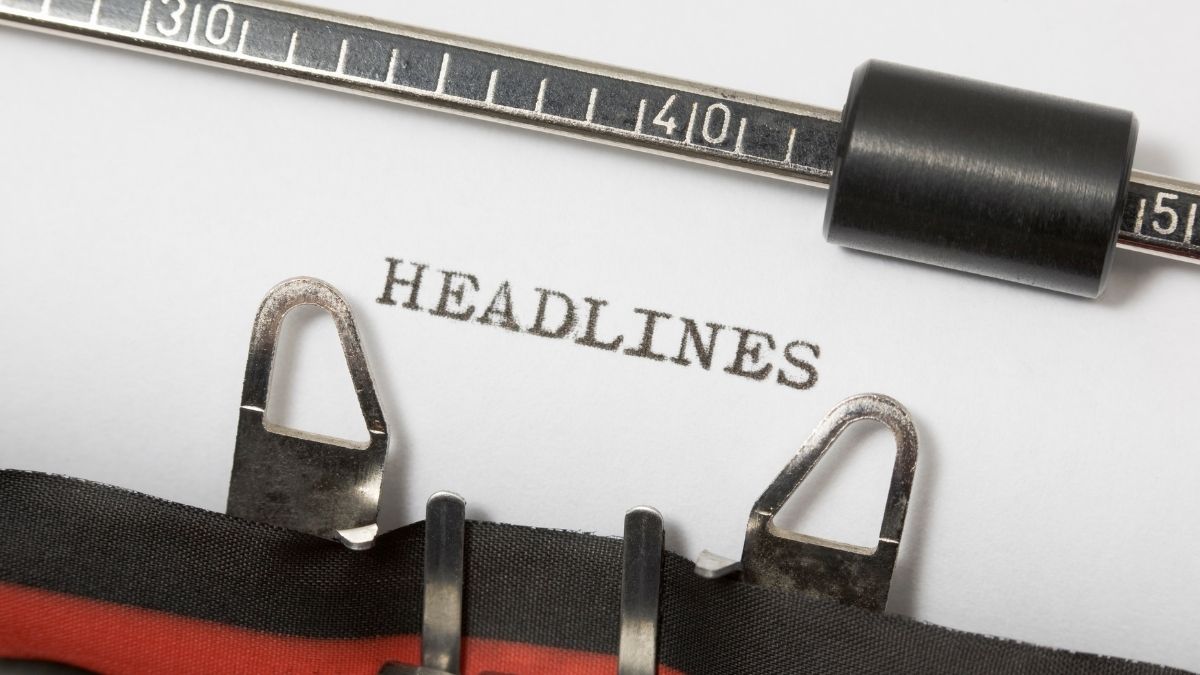
Consider this: You’ve spent countless hours researching and writing an excellent article.
Because you worked so hard on the article, you obviously want people to read it.
But here’s the unfortunate reality: 6 out of 10 people only read the headlines before sharing an article. Furthermore, only 49% claimed to have read the articles.
What should a creator of content do?
There is a clear link between the value and interest of a headline and whether or not people click on it.
Writing a great headline isn’t an exact science, but a lot of data has been collected and studied over the years to provide some hints as to what makes a great headline.
Here are some headline-writing tips to help you sway those readers and get more clicks.
Read 10 Digital Marketing Fundamentals That Every SEO Professional Should Know.
12 Tips for Writing Attention-Grabbing Headlines
Your headline is crucial in making a good first impression on a prospective reader.
We’re all aware of how important first impressions are.
Being average isn’t better than being bad. Your headline is either exceptional or forgettable. There isn’t a lot of room for interpretation here.
The following tips and methods will help you turn a bad or average headline into one that gets clicks and readers.
1. Investigate the Google Search Results
Examine the search engine results page (SERP) to see which articles you will be competing against after researching the keyword(s) you intend to target.
How can you make your content stand out from the crowd?
What is the user’s exact intent?
Is the first result a collection of listicles? What about how-to-do-it-yourself articles? What about branded content?
If you want to be a serious competitor and rank on Page 1, you must first understand the type of content that is already there.
2. Form an Emotional Bond
Emotional headlines outperform neutral headlines on a consistent basis.
Using powerful words to evoke emotions in your reader improves their first impression of your content while increasing their curiosity, dread, or anticipation to read more.
The most effective emotional headlines are those that target:
- Happiness.
- Love.
- Fear.
- Anger.
- Disgust.
- Affirmation.
- Hope.
3. Put names to use
For this headline trick to work, the names must be well-known to your target audience.
Brand names, like people, can have the same impact.
When targeting SEO topics, for example, using “Google” or “John Mueller” in your headline will generate clicks.
These are well-known brands and industry figures.
The names you include in your headline should be relevant to the niche of your brand.
4. Utilize Numbers
Numbers have a natural ability to draw people’s attention.
In the midst of an endless sea of words, numbers capture our attention and cause us to pause. Numbers assist our brain in organizing information so that we can remember it.
Use the power of listicles and numbers to outperform your SERP competitors.
5. Highlight the benefits to your reader.
When deciding whether or not to click on an article, readers ask themselves, “What do I get out of this?”
Your headline should state the benefit that a reader will gain by clicking through and reading it.
High-performing content fulfills one or more of the following roles:
- Entertain.
- Engage.
- Empower.
- Enrich.
- Educate.
- Inform.
- Inspire.
- Offer a solution.
When a reader clicks on your article and invest their time and attention in it, they’ve already formed expectations based on the benefit promised in the headline.
Make it clear to your reader what they will gain, but don’t promise too much.
6. Search Engine and Human Optimization
Your first priority should be to optimize your content so that it can be found and clicked on by your human audience.
The second most important thing you should do is optimize for search engines, particularly Google.
The good news is that humans and search engines generally agree on what they want to read, which includes content such as:
- Accurate.
- Comprehensive.
- Credible.
- Engaging.
- High-Quality.
- Informative.
- Specific.
- Unique.
- Useful.
- Valuable.
Include your primary keyword in the title to help Google index it and people find your content when they search for the topic.
If you’re stuck for ideas, use free title generator tools to help you write a better headline.
Keep in mind, however, that these tools do not know your audience as well as you do, and just because a headline was generated automatically does not mean it is the most advanced for SEO.
These free tools are best used for idea generation and analysis, not as a replacement for a human-created headline.
If you use WordPress, SEO plugins such as AIOSEO and Yoast can provide you with a built-in analysis of your headline SEO rating (as well as the post as a whole).
As you can see in the example below of AIOSEO, they will also make suggestions to help you improve your rating.
7. Create a number of headlines
The first headline that comes to mind is unlikely to be gold.
That’s perfectly fine! It is, in fact, perfectly normal.
Some experts advise writing ten or more headlines for each piece of content and then selecting the best one.
Make a number of headlines that target various formulas. Don’t just rearrange the words.
Try to target different emotions, points of view, and styles, such as:
- Humorous.
- Upbeat.
- Unexpected.
- Inventive wordplay.
- Numerical.
- Question.
- Thought-provoking.
- First-person narrative (I).
- Second-person singular (you/yours).
- Third-person pronouns (he/she/they/them).
Use headline analysis tools to keep track of SEO ratings for each option as you make your decision.
8. Examine Your Headlines
Your click data does not lie, but your brain does!
Don’t be too hard on yourself; we’re all biased to some extent. Our minds trick us into believing that we are clever and creative and that all of our headlines are brilliant.
Many creative headlines, however, never receive a single click.
People who skip over your article are not to blame, contrary to what your brain believes. It’s right there in the title.
By relying on quantitative data rather than your own opinions and feelings, you can eliminate bias.
9. Experiment with different headlines as well
Writing click-worthy headlines is an art, and it takes time to get the hang of it.
If you’ve followed all of the rules and still aren’t succeeding, don’t be afraid to throw the rulebook out the window and trust your instincts.
What kinds of headlines catch your attention? Continue from there.
10. Comply with formulas
Although there is an art to crafting headlines, keep in mind that your headline is a science, not a whimsical creative writing assignment.
No, I mean it.
There are formulas for writing headlines because they work. They’ve been tried and tested numerous times to figure out click-through rates.
This begs the question, “How can I differentiate my headlines from the crowd if everyone is using the same formulas?”
The best advice is to create your own formulas by modifying others and then testing them to see which ones work best for you and your brand.
11. Should You Be Concerned About Question Headlines?
Yes.
Question headlines can be a powerful tool for piquing the reader’s interest, but they come with a warning:
Don’t ask a question that has an obvious answer. Nobody is going to read your content.
Make certain that you actually answer the article’s question. Don’t slack off and squander the reader’s time!
Your response should be better than other existing content that poses the same question.
Information withholding should be done with caution. If you do, your content will appear clickbait.
Don’t put the answer to your question in the headline if it’s yes or no.
A more compelling headline that isn’t formatted as a question can usually be written.
12. Be Positive
There is already far too much negativity in the world without adding to it.
Your primary goal should be to help your readers, whether you’re providing useful information, solving a problem, answering a question, or entertaining them.
However, some businesses prefer to be associated with negativity. Creating controversy and inciting emotions elicits a strong emotional response, albeit one that is not positive.
It all depends on your brand’s image and the message you want to send to your target audience.
Make Attractive Headlines That Persuade Readers
If you want to break the 6 out of 10 reading statistics, you must make your headlines more compelling.
That will require a great deal of trial and error.
Even if you take every piece of advice in this article, you will not always be successful.
Pay close attention to your niche’s target audience. What are they actually clicking on? What news stories have piqued their interest? Who among them isn’t?
Follow-up data and analysis, like any other type of content marketing strategy, are essential for determining how to best target your specific audience.
Need help with our free SEO tools? Try our free Code to Text Ratio Checker, Broken Links Finder, Online Ping Website Tool.
Learn more from SEO and read An Introduction To Python & Machine Learning For Technical SEO.




